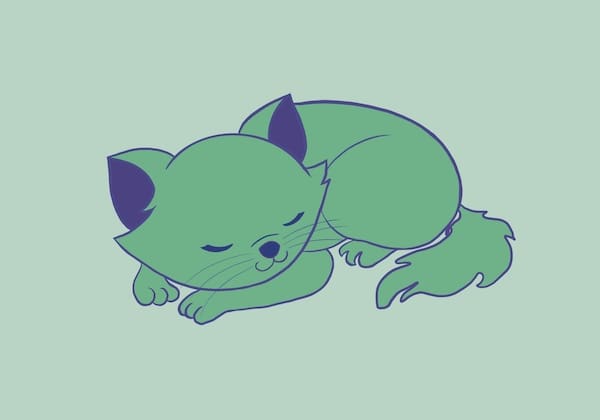Quoting Terry Pratchett, “In ancient times, cats were worshipped as gods; they have not forgotten this.” For thousands of years, cats have held many roles to humans, this relationship enduring through many civilisations and catastrophes. They have acted as pets, mouse-catchers, and deities.
Ray Cats are a proposed new role, a genetically modified cat species that changes colour in the presence of radioactive materials. The purpose is to warn future generations away from nuclear disposal sites. Since their domestication around 7500 BC, cats have held a special significance within religion, folklore, and semiotics — the science of signs and symbols. They’re strewn throughout history, from worship in the cult of the ancient Egyptian cat deity Bastet to drawing the chariot of the Norse goddess Freya. Superstition around the colour of cats began in medieval times, with black cats representing ill omens and witchcraft.
The combination of cats as loyal companions and mythological portents of evil makes them a highly suitable medium for nuclear warning folklore. As for alternative animals, dogs are far from the best semiotic choice if you’re trying to instil a culture around specifically not digging holes and sniffing out danger.
Presently, late-stage nuclear waste is hidden deep underground in deserted, artificial caverns. These sites are highly radioactive for up to 10,000 years, with prolonged exposure being fatal. But over that timespan, our cultures, languages, and societies will all cease to be recognisable. For perspective, the earliest known examples of written language date back 5,500 years. So the question remains, how can we send a warning that will last for millennia?
Here is where Ray Cats come in. Ray Cats were one of many solutions proposed in the 1980s by the Human Interference Task Force (HITF), created by engineering company Bechtel Corp. The HITF were a motley team of specialists drawing from anthropologists, nuclear physicists, and psychologists. Their solutions were unique, being as varied and mismatched as their members.
For a proposed warning to be considered viable, the HITF identified several complications that had to be overcome: warnings needed to stand the test of time, remaining operational on the timescale of 10,000 years, and they needed to still be interpretable in the event of civilisational collapse, where future humans might not have access to the knowledge of nuclear power. Finally, the solution must withstand the disasters that could cause this societal collapse, whether it be severe climate change, nuclear war, or a dino extinction-sized asteroid.
To satisfy these requirements, many of the solutions proposed by the HITF focused on cultural or biological engineering. Their view was that cultures are intangible and robust to time, whilst biological systems have already proven their ability to withstand cataclysm.
A cultural example was the Atomic Priesthood. American semiotician and linguist Thomas Sebeok proposed the foundation of the ominously named religion, drawing inspiration from the Catholic church, which he considered successful in passing on their message across generations. Mythology would be created around nuclear waste sites, marking them as religious taboo. The priesthood’s doctrine would revolve around preserving the knowledge of these sites and deterring trespass upon them.
In contrast, Information Plants offered a biological solution. These plants answer the question: what if it were possible to encode data about waste sites into the DNA of flowers? Also named ‘atomic flowers,’ they could be propagated around radioactive areas, offering future generations both a visual warning and a means to access the ‘ancient’ knowledge of nuclear power.
However, amongst these solutions, Ray Cats are unique in that they merge culture and biology. Therefore, for the Ray Cat solution to be successful, not only must the species be genetically engineered, but a culture around these cats also needs to be formed. This culture would instil the feeling that when your cat changes colour, you must leave your current location immediately.
Today, Ray Cats have moved far beyond just an obscure journal article from decades past. Instead, an active online community, the Ray Cat Solution, has drawn together artists, scientists, and philosophers.
The scientific work includes the biohacking laboratory Bricobio. This lab has begun work on combining the genetic glow of jellyfish and the radioactive response of yeast organisms to create an appropriate Ray Cat gene. Culturally, the New Hampshire Institute of Art has attempted to lodge Ray Cats into the social consciousness. So far, shirts, music, and even a documentary have been produced.
For members of this community, Ray Cats represent not only a means to save our descendants from harm, but also a way to bridge the too-often-disconnected fields of science and the arts. While the project’s goal may be to save the future, these forms of collaboration are just as important to our present.





